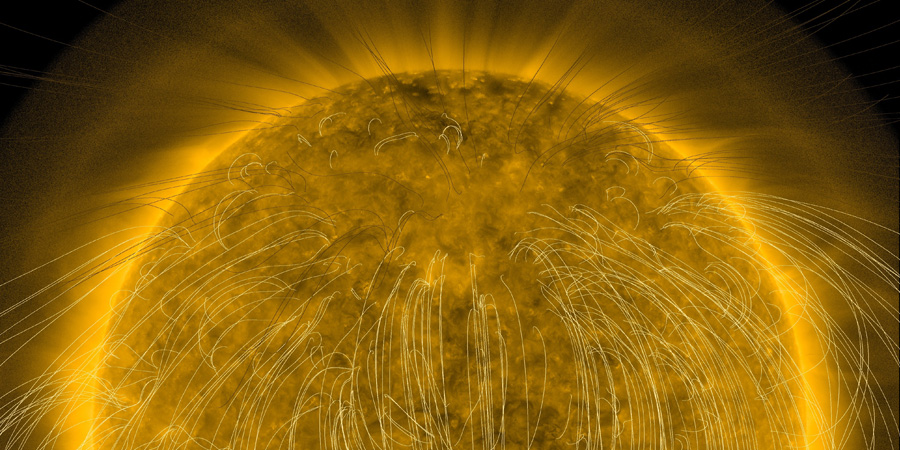April... The month of solar minimum?
Tuesday, 31 March 2020 22:30 UTC

Hello everyone and welcome to April. Could this month be a turn around point for us solar watchers? Is Solar Cycle 25 about to start? Understandable questions which we will shed some light on later in this article.
But first... it is indeed the 1st of April today which means it is April Fools. We at SpaceWeatherLive always chimed in with a funny or ridiculous joke article on this date in the past but we feel this would not be appropriate at this time where the entire world struggles to keep the corona virus in check. We hope all of our visitors are safe and do their part in keeping the corona crisis manageable.
But back to what we are here for... informing you about the weather out in space. We sound like a broken record, we know... but space weather remains very quiet. We did briefly reach active geomagnetic conditions yesterday at midnight UTC due to the effects of a high speed coronal hole solar wind stream but that was pretty much the only highlight during an otherwise very quiet month. For us the highlight of the month was the return of DSCOVR after it being in a safe hold mode for 9 months while a software patch was developed to correct a problem with the satellite’s attitude control system.
Jumping to today: April 2020 could actually turn out to be a very significant month for us space weather watchers! The NOAA/NASA Solar Cycle prediction panel predicted back in December that solar minimum would likely occur in April of 2020! There is no guarantee that solar minimum will occur this month but it is very likely that we have passed solar minimum already or solar minimum has yet to come in the near future. There is a +/- 6 month margin of error when it comes to these predictions. There is still a lot to learn when it comes to the inner workings of our Sun which makes it really hard if not impossible to predict solar activity and the development of the Solar Cycle in advance. We have to keep in mind that there are likely more months to come with no sunspot regions at all but high latitude sunspot regions belonging to Solar Cycle 25 will become more and more common as time goes by and the Solar Cycle 24 sunspot regions close to the equator will become more and more uncommon. We do have to keep in mind that it will take at least 6 months after solar minimum to conclude when solar minimum occurred. This is because solar minimum is decided by the Smoothed Sunspot Number (SSN). If you wish to know more about the SSN please check out this page.
If you are interested in additional, more in-depth information we got you covered: friend of the website Christian Harris is a very knowledgeable space weather enthusiast and amateur astronomer who goes in a little bit more detail on his Space Weather Trackers Facebook page. He compares the polarity and strength of the Sun's magnetic poles to draw a conclusion on how far we have advanced towards the start of Solar Cycle 25. Read his opinion on his Facebook page and be sure to leave a like.
No matter the way you look at it, there might be light at the end of the tunnel! Hang in there!
Thank you for reading this article! Did you have any trouble with the technical terms used in this article? Our help section is the place to be where you can find in-depth articles, a FAQ and a list with common abbreviations. Still puzzled? Just post on our forum where we will help you the best we can!
Latest news
Latest forum messages
Support SpaceWeatherLive.com!
A lot of people come to SpaceWeatherLive to follow the Sun's activity or if there is aurora to be seen, but with more traffic comes higher server costs. Consider a donation if you enjoy SpaceWeatherLive so we can keep the website online!

Space weather facts
| Last X-flare | 2024/03/28 | X1.1 |
| Last M-flare | 2024/04/25 | M1.3 |
| Last geomagnetic storm | 2024/04/26 | Kp5+ (G1) |
| Spotless days | |
|---|---|
| Last spotless day | 2022/06/08 |
| Monthly mean Sunspot Number | |
|---|---|
| March 2024 | 104.9 -19.8 |
| Last 30 days | 136.8 +28.6 |


